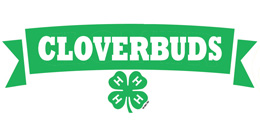May 15, 2019
Kansas 4-H Cloverbuds

Now and then we all need a reminder on 4-H Programs especially 4-H Cloverbuds! As we begin, acknowledge 4-H Cloverbuds is an educational program designed specifically for youth ages 5 and 6 and different that project-based 4-H designed for 7 – 18-year-olds.
Children of this age have distinctive learning characteristics and developmental needs that are different from older youth who participate in 4-H. That is why the 4-H Cloverbuds program is designed with specific educational objectives and policies focused to benefit 5- and 6-year-old children. The goal of the 4-H Cloverbuds Program is for developing developmental needs of the age group such as learning about self, socials skills and learning to learn. Children at this age are learning to write their names and the alphabet but are not yet ready for written activities, which may frustrate the child. These children are growing every day by developing motor skills to become proficient with scissors, crayons, and small tool, are often quite sensitive to criticism and see the world in terms of black and white, with very little middle ground. Five and 6 are eager to learn, often asking endless “how-what-when-where-why” questions, and are engaged by “what-if” questions.
Therefore, volunteers (extension agents, adults, and teens) are encouraged to focus on group activities that are leader directed which are high-energy and can be competed in a short time such as exploring their neighborhood, learning about first-aid, and trying new foods.
4-H Cloverbuds Program centers on cooperative learning and is not competitive. These 4-H Cloverbuds can display or present a show and tell about what they have learned with an adult or teen during the fair and receive a participation ribbon.
A brief reminder about Kansas 4-H Cloverbuds include:
Goals:
• Self-understanding skills (Initiating independence and self-direction)
• Social skills (Getting along with others)
• Decision-making skills (Making positive choices)
• Learning skills (Learning to learn)
• Mastering physical skills (Enjoying constructive and creative play)
Guiding Principles:
• Fun
• Activity focused
• Noncompetitive
• Group-centered learning
• Leader directed
• Positive
• Success oriented